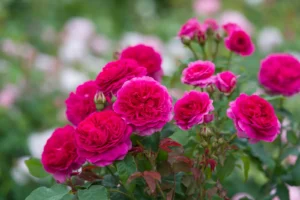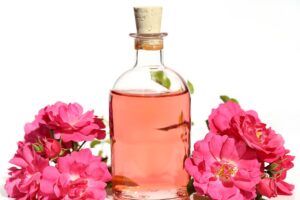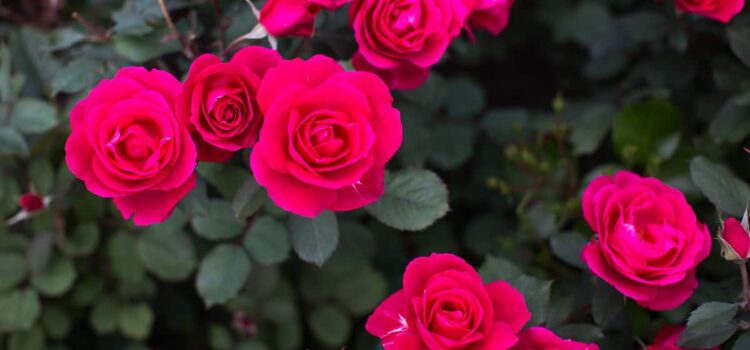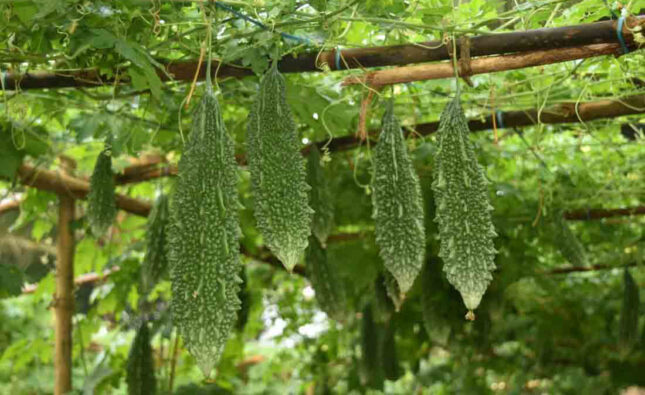Rose Plants Cultivation, Market Demond of Rose Flowers & Its Salles & Marketing
Rose is a type of flowering plant that belongs to the genus Rosa in the family Rosaceae. It is one of the most popular and widely cultivated ornamental plants, known for its beauty, fragrance, and versatility. Roses are native to various regions around the world and are grown in many different colors and forms.
Rose Plants Cultivation
Rose cultivation involves the process of growing roses, whether it be in a garden, greenhouse, or container. Here are some key steps and considerations for successfully cultivating roses:
1. Selecting Rose Varieties:
Choose rose varieties that are suitable for your climate, soil conditions, and personal preferences. Consider factors such as flower color, size, growth habit, fragrance, and disease resistance.
2. Preparation of Field:
Prior to planting, prepare the soil by removing weeds, rocks, and debris. Improve the soil structure and fertility by adding compost, aged manure, or other organic matter. Ensure proper drainage by incorporating sand or perlite if needed. Beds are prepared for the cultivation of roses. If the soil is light and proper drainage is there, the planting can be done even without making beds but if the soil is heavy and proper drainage is not there, raised beds (40 cm above the ground) should be prepared. Pits must be dug before the onset of rain so that the soil may settle down. Pits of 20-30 cm wide & 30 cm deep should be prepared and likewise the beds should be prepared. Care should be taken that the top soil should remain on the top.
3. Temperature:
Temperature is an important factor regulating the growth of rose plant. Plants are planted at a place where flower yield was highest in plants kept at night temperature between 15 to 18°C and day temperature of 20 to 25°C. During winters, because of the low temperature the quality of flowers is good.
4. Choosing the Planting Location:
Roses generally require at least six hours of direct sunlight daily. Select a location with well-drained soil that is rich in organic matter. Adequate air circulation is also essential to prevent fungal diseases.
5. Planting Roses:
Dig a hole that is wide and deep enough to accommodate the rose’s root system. Place the rose plant in the hole, making sure the bud union (the swollen area where the rose is grafted onto the rootstock) is at or slightly above ground level. Backfill the hole with soil, gently firming it around the roots.
6. Watering:
Provide adequate water to newly planted roses to help establish their root systems. Water deeply and thoroughly, ensuring the soil is evenly moist. Avoid overwatering, as excessive moisture can lead to root rot.
7. Fertilizing:
Roses benefit from regular fertilization to promote healthy growth and abundant blooms. Apply a balanced rose fertilizer according to the manufacturer’s instructions. It is generally recommended to fertilize roses in early spring and again after the first flush of blooms.
8. Pruning:
Pruning is an essential practice in rose cultivation. It helps maintain the plant’s shape, improve airflow, remove dead or diseased wood, and stimulate new growth. Prune roses during their dormant season or in early spring before new growth begins.
9. Pest and Disease Management:
Roses can be susceptible to pests such as aphids, thrips, and Japanese beetles, as well as diseases like black spot, powdery mildew, and rust. Monitor your roses regularly and take appropriate measures, such as applying organic or chemical controls, as needed.
10. Mulching:
Apply a layer of organic mulch, such as wood chips or compost, around the base of the rose plants. Mulching helps conserve moisture, suppress weeds, and regulate soil temperature.
11. Winter Care:
Depending on your climate, roses may require winter protection. This can involve mulching around the base of the plants, covering them with burlap or other protective materials, or moving potted roses indoors. Remember that specific rose cultivation practices may vary depending on the rose variety and your local climate. It’s also helpful to consult local gardening resources or seek advice from experienced rose growers in your area.

Importance of Rose
Roses hold significant importance in India, both culturally and economically. Here are some reasons why roses are important in India:
1. Cultural Significance:
Roses have a rich cultural significance in India. They are widely used in religious ceremonies, weddings, festivals, and other auspicious occasions. The petals and garlands made from roses are used for worship, decoration, and to honor guests.
2. Traditional Medicine:
Roses have been used in traditional Indian medicine systems like Ayurveda for their therapeutic properties. Rose petals, rose water, and rose oil are believed to have cooling and soothing effects on the body and mind. They are used in herbal preparations, skincare products, and aromatherapy.
3. Perfume and allies products
-
Rose water:
Rose water in also an important commercial product from rose petals. It is used as a perfume and in medicines and confectionary. In has the property of cooling the body and is often used in eye lotions and eye drops for its soothing qualities. It is also used in drinking water and sprinkled on the guests at weddings, feasts and other social functions.
-
Rose oil
Rose oil is important commercial product obtained from rose petals. Apart from sweet fragrance, it has medicinal property and is often used in Ayurveda. Bulgarian rose otto is largely used in perfuming soaps and cosmetics.
-
Gulkand
Rose petals are also preserved for direct consumption, by making gulkand which is prepared by pounding equal proportions of petals and white sugar. It is considered both as tonic and laxative.
-
Pankhuri
Dried rose petals are known as pankhuri which is occasionally used for preparing sweetened cold drinks.
-
Gul-roghan
It is rose hair oil prepared from rose petals by effleurage with wet sesamum seeds.
4. Perfume Industry:
India has a flourishing perfume industry, and roses play a crucial role in it. Rose oil and rose water are important ingredients in perfumes, attars (traditional Indian fragrances), and cosmetics. India is known for producing high-quality rose essential oil and rose water, particularly from the Damask rose variety.
5. Export of Roses:
India is a significant exporter of roses. The country cultivates and exports a large variety of roses to various international markets. The demand for Indian roses is particularly high during Valentine’s Day and other occasions when roses are in high demand globally.
6. Rose Gardens:
India is home to several renowned rose gardens, attracting visitors from around the world. One of the most famous rose gardens is the Zakir Hussain Rose Garden in Chandigarh, which is considered one of Asia’s largest rose gardens. These gardens showcase different rose varieties and contribute to the promotion of tourism and horticulture in India.
7. Floral Industry:
Roses are an integral part of India’s floral industry. They are grown commercially for the domestic market as cut flowers and for use in floral arrangements and bouquets. The floral industry provides employment opportunities and contributes to the country’s economy.
8. Symbolic Representation:
In India, roses are often associated with love, beauty, and affection. They are used as symbols of romance and are gifted on special occasions, particularly on Valentine’s Day. Roses hold emotional value and are considered expressions of love and admiration.
9. Traditional Art and Craft:
Roses and rose motifs are prevalent in various traditional Indian art forms and crafts. They are depicted in paintings, embroidery, textiles, and other forms of decorative arts. The intricate design of roses adds aesthetic beauty to these artistic expressions. Overall, roses have deep-rooted cultural, economic, and aesthetic importance in India. They are an integral part of religious practices, traditional medicine, perfume industry, and floral trade. The beauty and symbolism of roses have made them an enduring symbol of love and celebration in Indian culture.

Globally, Cultivating Varieties of Rose
Globally, cultivating varieties of roses is a widespread practice due to the popularity and versatility of this beloved flower. Here are some key points about cultivating different varieties of roses around the world:
1. Hybrid Tea Roses:
Hybrid tea roses are one of the most popular types of roses cultivated globally. They are known for their large, well-formed blooms and long stems, making them ideal for cut flower arrangements. Hybrid teas come in various colors and are often grown in gardens and commercial rose farms.
2. Floribunda Roses:
Floribunda roses are another widely cultivated variety. They produce clusters of smaller flowers in a range of colors and are known for their abundant and continuous bloom. Floribundas are popular for landscape planting, as they add color and fragrance to gardens.
3. Grandiflora Roses:
Grandiflora roses are a cross between hybrid tea roses and floribundas. They feature large, high-centered blooms carried on long stems, similar to hybrid teas, but they also produce clusters of flowers like floribundas. Grandifloras are grown for their striking flowers and are often used in garden displays and as cut flowers.
4. Climbing and Rambling Roses:
Climbing and rambling roses are cultivated for their ability to climb or scramble over structures, such as walls, trellises, and pergolas. These roses have long, flexible canes and produce flowers in various sizes and colors. They add vertical interest and a romantic charm to gardens and landscapes.
5. Shrub Roses:
Shrub roses are a diverse group of roses that encompass a wide range of growth habits, flower forms, and colors. They are known for their hardiness, disease resistance, and ease of cultivation. Shrub roses are versatile and can be used in borders, mass plantings, and as standalone specimens.
6. Miniature and Patio Roses:
Miniature and patio roses are smaller in size compared to other rose varieties. They are compact, bushy plants that produce petite blooms in clusters. These roses are suitable for container gardening, small gardens, and as indoor plants. They bring color and beauty to limited spaces.
7. Species Roses:
Species roses, also known as wild roses, are the original wild forms of roses found in nature. They vary in size, color, and growth habit. Many modern rose varieties are hybridized from species roses. These roses are often grown for their natural beauty and as a source of genetic diversity in rose breeding programs.
8. Old Garden Roses:
Old garden roses are historic rose cultivars that were cultivated before the introduction of hybrid teas in the 19th century. They include various classes such as gallicas, damasks, bourbons, and moss roses. Old garden roses are valued for their rich fragrances, diverse flower forms, and historical significance.
9. Modern Rose Hybrids:
Breeders continually develop new rose hybrids to introduce unique colors, forms, fragrances, and disease resistance. These modern hybrids combine traits from different rose classes to create improved varieties suitable for various growing conditions and purposes.
10. Local and Regional Varieties:
Different regions around the world have their own locally adapted rose varieties that thrive in specific climates and conditions. These local and regional varieties often carry cultural significance and may have unique characteristics that make them well-suited to their respective regions. Rose cultivation and breeding are ongoing processes, leading to an extensive array of rose varieties available worldwide. Gardeners, horticulturists, and rose enthusiasts continue to explore and cultivate these diverse roses, ensuring a continuous supply of stunning flowers for gardens, floral arrangements, and various commercial uses.
Disease Management in Rose Plants
Disease management is essential for maintaining healthy rose plants. Roses can be susceptible to various diseases, including fungal infections, viral diseases, and bacterial infections. Here are some common diseases that affect roses and strategies for managing them:
1. Black Spot (Diplocarpon rosae):
Black spot is a fungal disease characterized by black spots on the leaves, which eventually cause defoliation if left untreated. To manage black spot:
- Plant disease-resistant rose varieties.
- Ensure proper spacing between plants to promote air circulation.
- Water the roses at the base to keep the foliage dry.
- Remove and destroy infected leaves promptly.
- Apply fungicides labeled for black spot control, following the recommended application schedule.
2. Powdery Mildew (Sphaerotheca pannosa):
Powdery mildew appears as a white powdery coating on the leaves, stems, and buds. To manage powdery mildew:
- Choose disease-resistant rose varieties.
- Provide adequate sunlight and airflow around the plants.
- Prune out dense growth to improve air circulation.
- Remove and destroy infected plant parts.
- Apply fungicides labeled for powdery mildew control, following the instructions carefully.
3. Rose Rust (Phragmidium spp.):
Rose rust causes orange or rust-colored pustules on the undersides of leaves, which may eventually spread to the upper surfaces. To manage rose rust:
- Remove and destroy infected leaves, canes, or plants.
- Provide good air circulation and avoid overcrowding.
- Apply fungicides labeled for rust control, as recommended.
4. Rose Mosaic Virus:
Rose mosaic virus causes mottling, streaking, or distortion of the leaves and reduces the vigor of the plant. Infected plants cannot be cured, so prevention is key:
- Purchase healthy, virus-free plants from reputable sources.
- Inspect new plants for symptoms before introducing them to your garden.
- Practice strict sanitation, including sterilizing tools between pruning different plants.
- Control aphids and other insects that can transmit the virus.
- Remove and destroy infected plants to prevent the spread of the virus.
5. Crown Gall (Agrobacterium tumefaciens):
Crown gall is a bacterial disease that causes tumor-like growths (galls) on the roots or at the base of the plant. To manage crown gall:
- Avoid planting roses in areas with a history of crown gall.
- Purchase disease-free plants from reliable sources.
- Practice good sanitation and remove and destroy infected plants.
- Avoid wounding the plants, as the bacteria can enter through cuts or wounds.
- There are no chemical controls available for crown gall; prevention is the key approach. It is important to note that proper identification of the specific disease affecting your roses is crucial for effective management. Consult with local experts, extension services, or plant disease clinics to confirm the diagnosis and get specific recommendations for managing diseases prevalent in your region. Integrated pest management practices, including good cultural practices, regular monitoring, and timely intervention, are key to maintaining healthy roses.

Demond of Rose Flowers
The demand for rose flowers is significant due to their beauty, fragrance, and symbolic value. Roses are sought after for various occasions, events, and personal use. Here are some factors that contribute to the demand for rose flowers:
1. Weddings:
Roses are a popular choice for wedding decorations, bridal bouquets, boutonnieres, and centerpieces. Their romantic symbolism and availability in a wide range of colors make them a preferred flower for weddings.
2. Special Occasions:
Roses are often given as gifts for special occasions like anniversaries, Valentine’s Day, Mother’s Day, birthdays, and graduations. They are considered a classic and timeless expression of love, affection, and celebration.
3. Floral Arrangements:
Roses are widely used in floral arrangements for various purposes, including corporate events, hotel lobbies, restaurants, and home decorations. Their versatility allows them to be combined with other flowers or foliage to create stunning arrangements.
4. Events and Functions:
Roses are in demand for corporate events, gala dinners, charity fundraisers, and other social functions. They add elegance and sophistication to the ambiance, making them a popular choice among event planners and organizers.
5. Florists and Flower Shops:
Florists rely on rose flowers to meet the demands of their customers. Roses are a staple in floral designs and arrangements, and florists often stock a variety of rose colors and varieties to cater to different preferences.
6. Symbolism and Sentiment:
Roses hold deep symbolic meanings, with different colors representing various emotions and messages. Red roses symbolize love and romance, while pink roses convey gratitude and admiration. White roses symbolize purity and innocence, and yellow roses represent friendship and joy.
7. Fragrance and Aesthetics:
The enchanting fragrance of roses adds to their appeal. Many people are drawn to the sweet and captivating scent of roses. Additionally, their vibrant colors and elegant form make them visually appealing and desirable.
8. Commercial Flower Trade:
Roses are a valuable commodity in the international flower trade. They are grown in various countries and exported worldwide to meet the global demand for fresh cut flowers and rose varieties.
9. Gardening and Landscape Design:
Home gardeners and landscape designers often incorporate roses into their gardens and outdoor spaces. Roses offer a wide range of colors, growth habits, and bloom types, allowing for creativity and customization in garden design.
10. Cultural Significance:
Roses hold cultural significance in many societies and traditions. They are an integral part of religious ceremonies, cultural festivals, and customs in different parts of the world. This cultural significance contributes to the demand for roses during specific cultural events and celebrations. The demand for rose flowers is driven by their beauty, versatility, symbolism, and widespread use in various contexts. Whether for personal expressions of love and celebration or professional floral arrangements, roses continue to be highly sought after and cherished by people around the world.

Where Can We Sell Rose Flowers
There are several potential avenues for selling rose flowers. Here are some common places where you can consider selling your rose flowers:
1. Florists:
Local florists are primary buyers of fresh-cut flowers, including roses. Contact and establish relationships with florists in your area. Provide them with information about your rose varieties, availability, and pricing. Delivering fresh and high-quality roses on a regular basis can help secure consistent sales.
2. Farmers’ Markets:
Farmers’ markets provide an excellent platform to sell directly to customers. Set up a stall or booth at a local farmers’ market and display your rose flowers attractively. Engage with customers, offer advice on selecting and caring for roses, and provide information about your farm and cultivation practices.
3. Online Marketplaces:
Utilize online platforms to reach a broader customer base. Create an online store or list your rose flowers on popular e-commerce platforms specializing in flowers and plants. This allows customers to browse and purchase your roses conveniently from anywhere. Ensure efficient packaging and timely delivery for online orders.
4. Wedding and Event Planners:
Collaborate with wedding planners, event organizers, and party decorators who frequently require fresh flowers, including roses. Establish connections with professionals in the event industry and offer your rose flowers as part of their floral arrangements or as standalone bouquets.
5. Retail Stores and Garden Centers:
Approach local retail stores, garden centers, or home decor shops that sell flowers or have dedicated floral sections. Provide them with a supply of fresh rose flowers to complement their offerings. These establishments can serve as additional outlets for selling your roses.
6. Restaurants, Hotels, and Venues:
Restaurants, hotels, and event venues often require fresh flowers for table settings, receptions, and other special occasions. Contact these establishments and offer your rose flowers for their floral needs. Building relationships with such establishments can lead to recurring orders.
7. Subscription Services:
Consider offering a subscription service where customers can sign up for regular deliveries of fresh roses. This can include weekly, bi-weekly, or monthly deliveries of rose bouquets or arrangements. Market your subscription service to individuals, offices, and organizations seeking a consistent supply of fresh roses.
8. Direct Sales from Farm:
If feasible, create an on-site farm shop or a dedicated area where customers can visit and purchase roses directly from your farm. Provide a pleasant shopping experience, allowing customers to handpick their desired roses.
9. Floral Designers and Wedding Photographers:
Network with local floral designers and wedding photographers who may need fresh roses for their projects. Establish collaborations with these professionals, and they may recommend your rose flowers to their clients.
10. Community Events and Festivals:
Participate in local community events, flower shows, or festivals where you can showcase and sell your rose flowers. Such events provide exposure to a diverse audience interested in floral arrangements and gardening. Remember to adapt your sales strategies to your specific location and target audience. Establishing a strong brand presence, delivering consistent quality, and providing excellent customer service are key factors that contribute to the success of selling rose flowers.







